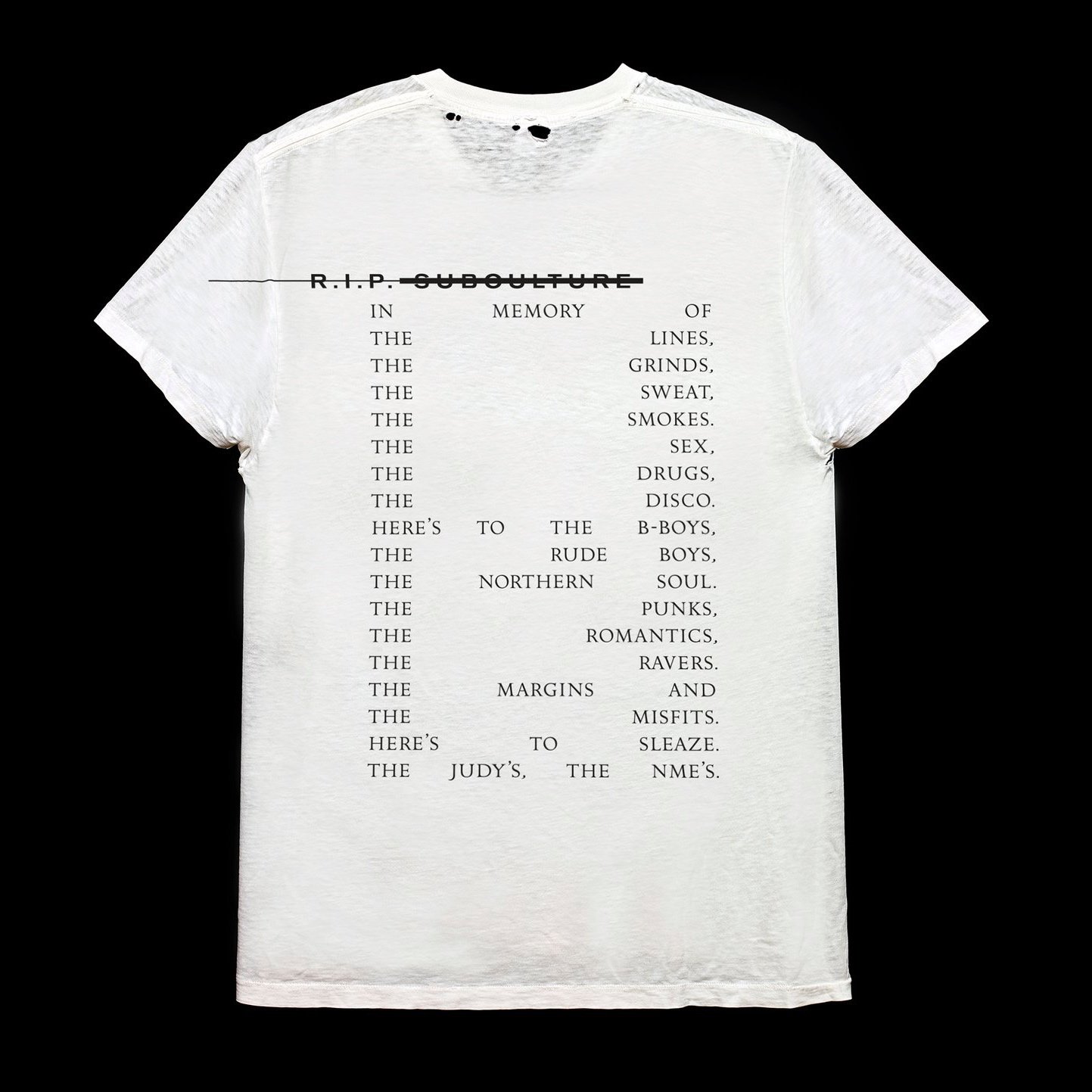TASTE MATTERS
TASTE MATTERS
Only good taste can save us.
By Gill Linton

How’s this for a controversial opener from a brand that sells old clothes.
Resale is killing creativity and it’s an environmental issue.
The soon to be $352.84 billion luxury resale market is designed to encourage over-consumption. It’s the short cut to outdated signifiers of status that anyone can buy on the cheap, knowing it can easily be dismissed and resold to the digital landfill in the cloud, disguised as sustainable fashion democracy to sell as much as possible.
Instead of supporting this culture of disposability, it’s everyone’s responsibility to cut consumption which will cut emissions. Including magazines that promote sustainable fashion but still push full looks with no old clothes.
"Fast forward, and society has become numb and reliant on fashion curation by data and someone with some old clothes in their wardrobe and an Instagram account in order to decide what to buy, and worse, how to dress."
Understanding the distinction between ‘resale’ and contemporary-vintage might help.
Anyone can now own designer clothes and sneakers, but not everyone knows the backstory of an item that not everyone else has. Not everyone knows its provenance and its meaning. Not everyone respects the ideas, beyond the shape and color of things, that changed the course of fashion history, usually by pissing off the fashion establishment in some way.
When you look back at pivotal cultural moments in history, fashion’s role in shaping identity, attitudes and beliefs is obvious by the ‘uniforms’ worn. Mods, punks, skinheads, new romantics, grunge etc., (pick your gang), each had a point of view and you were either with them or against them. Diverse groups creatively inspire — and alienate — each other. That’s how subcultures inspire, morph, bifurcate and grow. Just like creativity.
Fast forward, and society has become numb and reliant on fashion curation by data and someone with some old clothes in their wardrobe and an Instagram account in order to decide what to buy, and worse, how to dress. The necessary discovery and cultivation of taste has been abandoned for easy access to excess.
Taste matters because it creates the boundaries necessary to cope with over-consumption. Boundaries means to stay within the margins and the fringes and having boundaries means having respect for the choices we make. Respect for fashion history, creativity and the planet.
Contemporary-vintage and Future Vintage are about the emotional and financial worth of clothes that inspires a culture of longevity; buy it, keep it for a long time and sell it as something you’ve invested in.
But don’t confuse this with choosing classic and timeless design, which doesn’t move creativity or culture forward. Ironically, timeless and classic is not lasting. It’s safe and copied to the point where it becomes obsolete and unnecessary. It’s the equivalent of fast fashion. It just keeps us going around in ever-decreasing, derivative creative circles. And like fast fashion, the speed of compulsively selling one season to buy the next is the wrong kind of circularity.
A slower approach to buying better can be more expensive. And like expensive hotels during a pandemic that stops people travelling unnecessarily, it can stop over-consumption and force consideration. It’s a genuinely sustainable eco-system; we stop overconsuming and fashion will stop over-producing. Unless you are a collector making wise investments, having too many clothes is the new smoking and the new ‘busy’. We have to stop glamorizing it.
It’s really simple, when everyone is buying the same thing –- one branded T-shirt is the same as the next –- ideas can’t grow. Ideas come from the past and there are less and less of them. Creativity is in danger of becoming as extinct as the planet.


